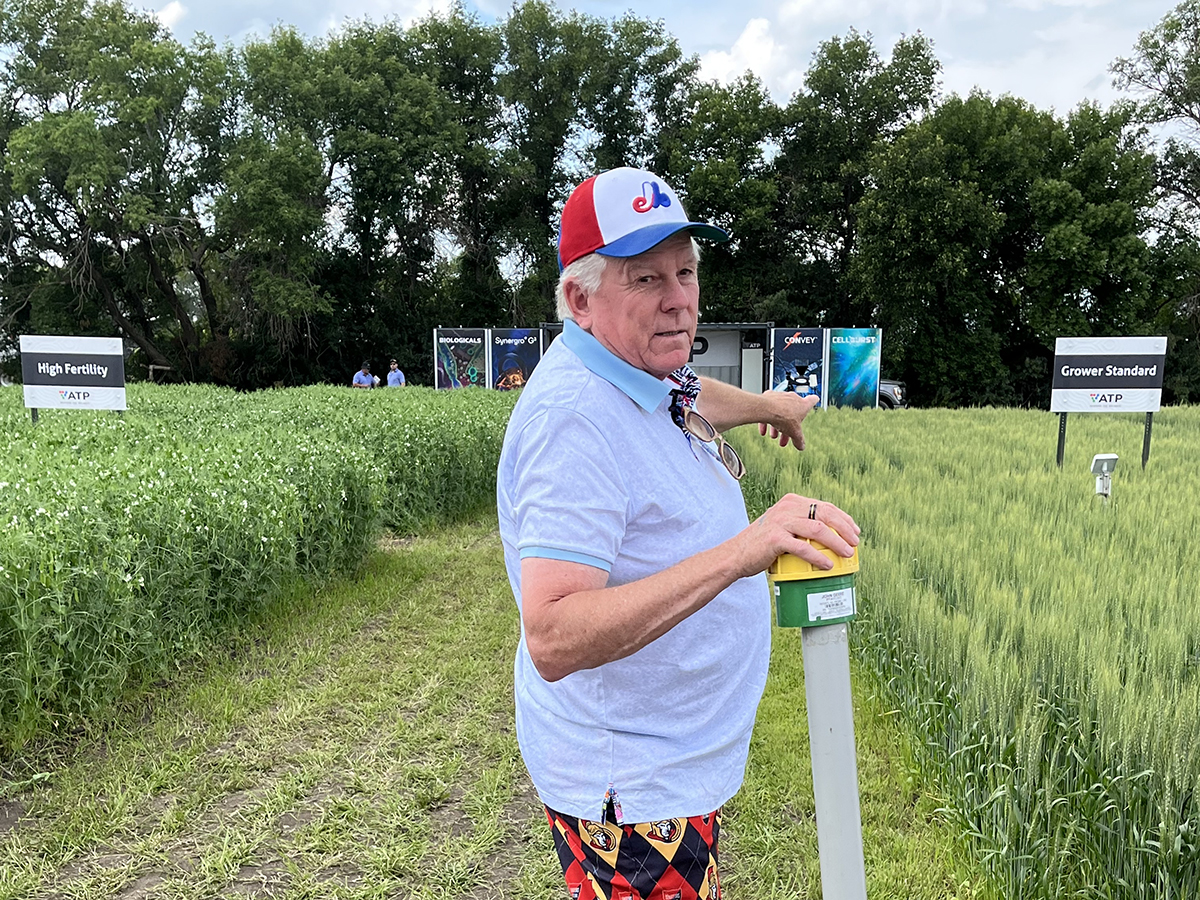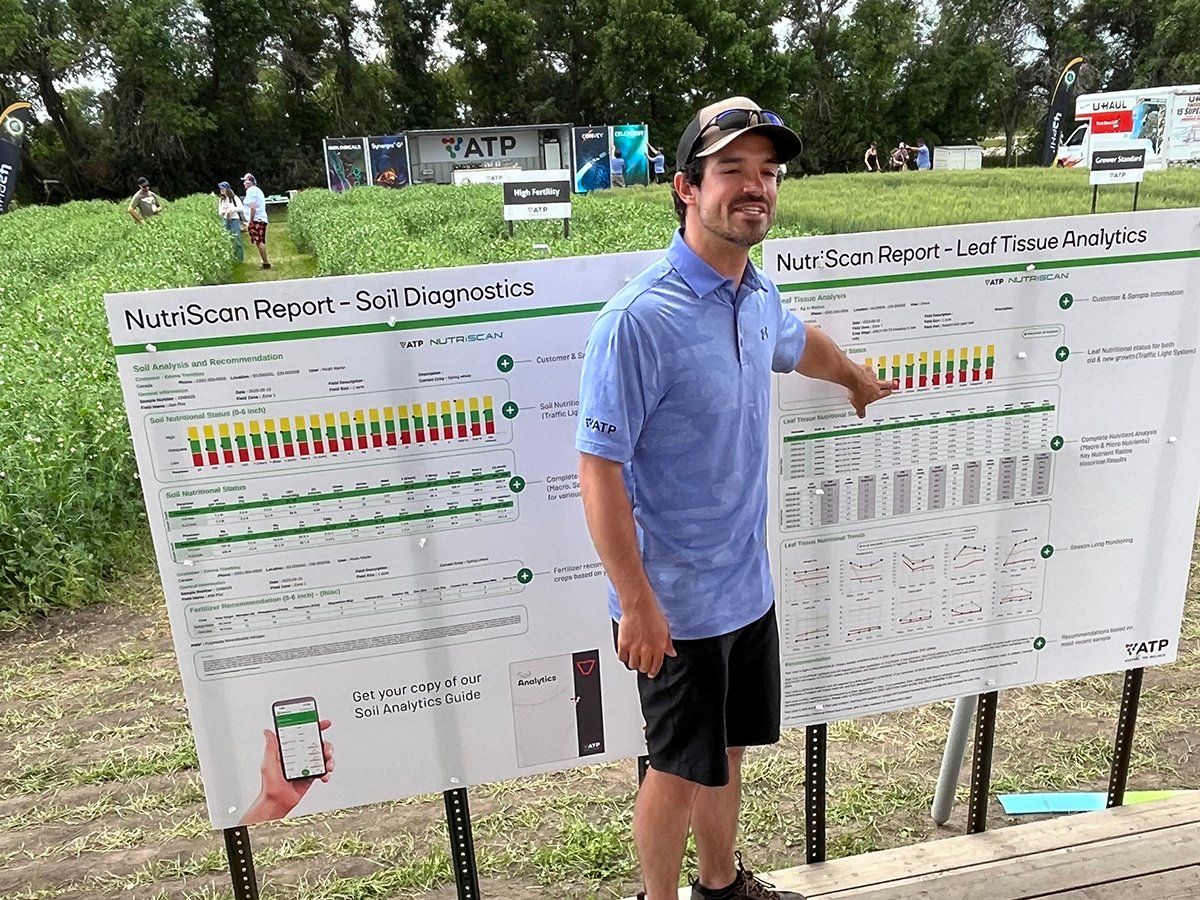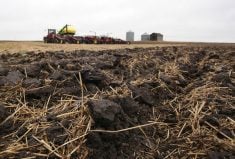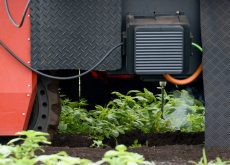ATP Nutrition did itself a solid by winning the Ag in Motion 2025 Innovation in Agriculture Award for agronomy.
The company unveiled its new Synergro G3 as the first solid, granular biostimulant derived from a consortium of biological metabolites.
Follow all our Ag in Motion coverage here
Read Also

Saskatchewan puts crown land auction on hold
Auctions of Saskatchewan crown lease land are once again on hold.
“It just opens up more opportunity for farmers to be able to use it. More traditionally, with biostimulants, it’s always been in a liquid form,” said Aron Kathler, regional account manager with ATP for western Manitoba and southeastern Saskatchewan.
“Majority of guys are putting fertilizer down in a granular form, so how can we get guys to help out their crops with what majority of the guys are using already?”
The product, which makes it easier for farmers to apply alongside traditional fertilizer applications, was put to market this year in granular form.
Kathler was associate manager for the trials in approximately 100 fields, and while the results varied, they saw gains averaging two to four bushels per acre, with the ability to improve rooting mass and above-ground biomass across various crop types, including pulses, canola and cereals on most fields.
ATP Nutrition uses a balance of nutrition, biostimulants and analytics for its customers to maximize yields.
The company gave guided tours at Ag in Motion 2025 of its analytics, a small crop plot and a science area, demonstrating how its biostimulants help plants under abiotic stress such as drought.
ATP stopped watering the plants in its demonstration and added its product to some of the plants. It said there was a notable difference in overall plant health.
“We have the same situations where you see the moisture levels are the same, but these (with the biostimulant) look like healthier, happy plants compared to these ones. What a biostimulant will do is activate some pathways and help the plant handle this stress,” said Barbara Hodecker, director of research and development for ATP Nutrition.
“You apply it before, and when the stress comes, the plant is more prepared to handle it.”
Biostimulants are relatively a new field as science continues to deepen its understanding of how they affect the plant.
“With the Synergro G3 , one of the things we submit is the RNA sequencing, so we know exactly which genes are in direct relation to the plant. It gives them an extra layer of information about the product and to be able to help the farmer position it properly,” said Hodecker.
Biostimulants can act as a safety net mechanism for crops during challenging growing conditions.
The ATP product line has been rigorously tested with an extensive list of seed-protection products, herbicides, fungicides and other fertilizers.

The company’s location in Oak Bluff, Man., makes it all too familiar with recent drought.
July has seen the Rural Municipality of St. Laurent declaring a state of emergency, with the RM of Coldwell declaring a state of agricultural disaster.
Saskatchewan RMs that have declared a state of emergency due to extreme drought include Maple Creek, Fox Valley, Enterprise and Big Stick.
In Alberta, Cypress County and Municipal District of Pincher Creek have declared states of disaster in the south while the MD of Greenview and the County of Grande Prairie have done the same in the north.
Irrigation helps when it’s available, and while there is no magic bullet to fully counter drought, Hodecker said biostimulants can help in the condensed growing seasons that Canadian farmers face compared to her homeland of Brazil.
“You have just one season in Canada, which is quite different. You have one chance. You try and do the best you can do based on the tools that we have currently to prepare the plant for the heat stress,” said Hodecker.
“It’s nice to see Canada moving in a direction where these products will be more common. I’m from Brazil and we use a lot. We have three seasons to use the product because we have hot weather the entire year. Canada is tricky where you have one season, one shot. “















